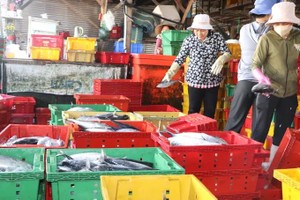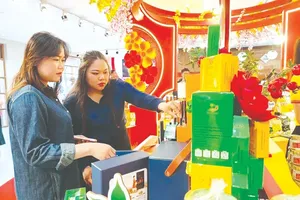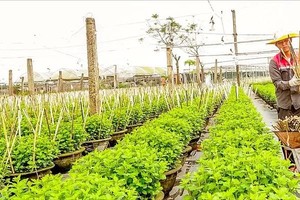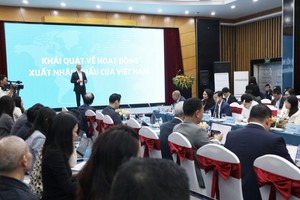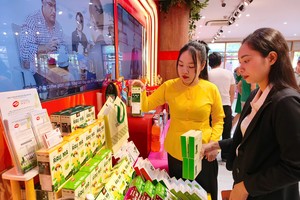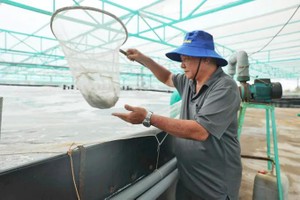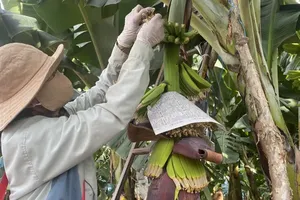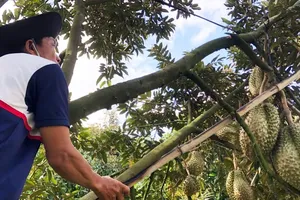
Transparent origins and intelligent localization are imperatives for Vietnamese goods to surmount the barriers of Free Trade Agreements (FTAs) and mitigate the risk of U.S. tariffs on transshipped goods.
In a global supply chain that demands transparency, sustainability, and accountability, a product’s value is no longer judged by its quality alone, but by the story of its entire lifecycle – from its production origins and processes to its social and environmental impact.
Although Vietnam has become a vital link in many value chains through deep global integration, its role remains predominantly in low-value-added processing and assembly, leaving it easily replaceable. The challenge has evolved from merely attracting manufacturing orders to ensuring Vietnamese products can truly stand on the global stage with their own identity, brand, and high creative content.
Achieving this necessitates the construction of two pillars: first, transparent origins to satisfy increasingly stringent FTA rules and avert the threat of U.S. tariffs on transshipped goods; and second, intelligent localization, which focuses on mastering the core, value-adding stages that create differentiation.
Transparent origins transcend the mere completion of export documentation or Harmonized System (HS) codes. It represents a commitment to delineating the source of raw materials, production processes, labor conditions, and environmental stewardship. Only then will Vietnamese products be equipped to meet rigorous international standards and potentially transform into symbols of cultural pride.
Furthermore, intelligent localization is Vietnam’s path to breaking free from dependence on foreign supply sources and enhancing control over its value chains. This strategy does not demand autonomy in every stage but rather mastery of the pivotal elements.
This could manifest as control software developed by Vietnamese engineers, industrial designs that bear a distinct cultural imprint, or the use of locally-sourced, eco-friendly materials. When these elements are integrated, localization elevates not just the domestic production rate but, more importantly, it localizes identity and creativity.
To achieve this, Vietnam must establish a robust ecosystem that nurtures creative products with clear origins. This entails a platform that tightly integrates research centers, smart factories, industry associations, e-commerce platforms, and a national origin traceability system.
Every design concept, production order, and market-ready product must be issued a “digital passport” that comprehensively documents its journey from raw material to finished good. This passport must be authenticated by independent third parties and adhere to both quality and ethical standards.
To realize this vision, Vietnam must synchronously implement a three-step national strategy. First, the State must promulgate standards for origin traceability and certification for all creative products, extending beyond agriculture to include industrial goods, fine handicrafts, and high-tech items.
Second, a national “Vietnam Innovation Center” should be established to evaluate, certify, and connect products that meet the criteria for origin, creative content, and cultural identity. This center would also be responsible for developing a “Creative Vietnam” label, analogous to Japan’s “Good Design” award or the Republic of Korea’s “K-Innovation” brand, to help domestic and international consumers easily identify products genuinely mastered by Vietnamese creators.
Finally, a set of substantive preferential policies is essential, including tax exemptions, priority access to credit, and support for media and trade promotion for enterprises, cooperatives, and startups that meet the criteria for creativity and transparency.
At its core, this requires a fundamental shift in the development mindset from chasing quantity to pursuing differentiation and real value.
For instance, an artisanal highland brocade product with a clear origin – detailing the weaver, the natural dyes used, and a modern applied design – can command a far higher export value than mass-produced industrial textiles. Similarly, a software solution developed by Vietnamese engineers, if its R&D process is transparent and it offers a practical solution, fully deserves to carry Vietnam’s name on the global technology map.
Transparent origins are not just a technical tool for market access but a profound commitment to sustainable development. When a product’s journey is made transparent, its producer is compelled to be accountable for their impact on the environment, their workers, and their community.
Consequently, creativity transcends mere technique or form to become ethical, socially meaningful innovation. Only then can Vietnam produce a generation of products truly imbued with intellect and responsibility, ready to stand confidently in the global market on its own merits.
Creative Vietnamese products are no longer a distant dream. They exist today in the ideas of young designers, the dexterity of skilled artisans, the intellect of technology engineers, and the dedication of innovative farmers.
To transform these individual creations into a national brand, it is necessary to form a transparent institutional framework where every idea is protected, every value is authenticated, and every product carries an authentic “Vietnamese passport”, poised to conquer the global market.




